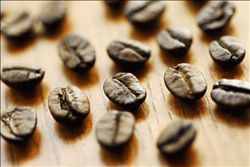Description of Arabica Coffee Flavor and introduction of Robosta's characteristic Variety producing areas
There has long been a theory that Roberta produces better crema during punching, which is true. Because the aroma composition and aromatic oil content of Roberta is only half that of Arabica coffee. This means that less oil is quenched into coffee, thus reducing the effect of oil on foam stability, so increasing Roberta will reduce the overall amount of oil quenched from coffee powder, which means that you have a higher possibility of producing more stable and richer Crema Arabica coffee trees growing between 900m and 2000 meters above sea level; more hardy, and the suitable growth temperature is 1524 ℃. It needs higher humidity, and the annual rainfall is not less than 1500 milliliters. At the same time, it also requires higher requirements for cultivation techniques and conditions.
Arabica coffee beans are mainly grown in South America (except Argentina and parts of Brazil), Central American countries, Africa (Kenya, Ethiopia, etc., mainly East Africa), Asia (including parts of Yemen, India and Papua New Guinea), Yunnan, Hainan and Taiwan in China also grow a small amount of Arabica coffee beans in the world. Arabica coffee accounts for about 65%, 80%, and its excellent flavor and aroma make it the only coffee of these native species that can be drunk directly and alone. However, its resistance to drying, frost, diseases and insect pests is low, especially to the biggest natural enemy of coffee-leaf rust, so all producing countries are committed to improving varieties. For example, Sri Lanka, as we all know, used to be one of the most famous coffee producers in the past, but coffee farms were not spared by leaf rust at the end of the 19th century. Since then, Sri Lanka has turned to black tea, which is also the kingdom of black tea in India.
Although both are widely cultivated, there are significant differences in Arabica Canephora Robusta. Beans are different, plants are different, and then, their scope of use is also different. Arabica coffee has a rich and delicate taste, strong smell, high acidity and slippery texture: it is not easy to be bitter; caffeine is lower than Robusta coffee. Its excellent flavor and aroma make it the only coffee that can be drunk directly. The world-famous Blue Mountain Coffee uses Arabica coffee beans. Robusta coffee beans have a unique aroma and bitter taste, and the content of caffeine is much higher than that of Arabica. To make a cup of pure espresso, you need to mix a certain proportion of high-quality robusta beans on the basis of Arabica beans. Because among the many choices of coffee beans, high-quality robusta coffee beans can make Italian coffee show its due personality, increase the taste of coffee, make it strong, increase the bitterness at the same time, and make the golden oil of coffee more attractive. If you taste carefully, you can also taste chocolate or cocoa.

Important Notice :
前街咖啡 FrontStreet Coffee has moved to new addredd:
FrontStreet Coffee Address: 315,Donghua East Road,GuangZhou
Tel:020 38364473
- Prev

Costa Rica San Roman coffee with soft taste Grind treatment Variety characteristics
Costa Rica's fine coffee has grown rapidly, with its honey-treated mild acidity, soft taste and sweet, high-quality berry flavor. The so-called honey treatment method: refers to the coffee beans in the water washing method to remove the peel pulp step, select the remaining part of the pectin meat to make it undergo a fermentation process, this treatment method is honey treatment method.
- Next

The characteristics of several major coffee producing areas in Ethiopia introduction to the Flavor description of Fine Coffee varieties
Harald is famous for its special bean variety, Longberry, which is processed by dry method. This coffee has a fruity aroma of red wine. It is this unique aroma from the Harald region that gives the mellow aroma of the Arabica coffee we usually drink. Kinby and Cedamo produce washed coffee. Kimbe Coffee has a balanced taste and a stronger flavor than Harald Coffee. Cedamo
Related
- Detailed explanation of Jadeite planting Land in Panamanian Jadeite Manor introduction to the grading system of Jadeite competitive bidding, Red bid, Green bid and Rose Summer
- Story of Coffee planting in Brenka region of Costa Rica Stonehenge Manor anaerobic heavy honey treatment of flavor mouth
- What's on the barrel of Blue Mountain Coffee beans?
- Can American coffee also pull flowers? How to use hot American style to pull out a good-looking pattern?
- Can you make a cold extract with coffee beans? What is the right proportion for cold-extracted coffee formula?
- Indonesian PWN Gold Mandrine Coffee Origin Features Flavor How to Chong? Mandolin coffee is American.
- A brief introduction to the flavor characteristics of Brazilian yellow bourbon coffee beans
- What is the effect of different water quality on the flavor of cold-extracted coffee? What kind of water is best for brewing coffee?
- Why do you think of Rose Summer whenever you mention Panamanian coffee?
- Introduction to the characteristics of authentic blue mountain coffee bean producing areas? What is the CIB Coffee Authority in Jamaica?

